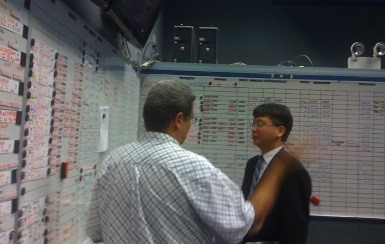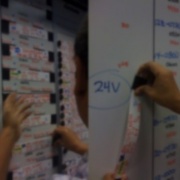Here is a true story about a visit to a major asset operations planning center. Our host executives had told us about their smart system and how, through optimization, it executed the planning and scheduling. They took us on a tour of the facility and pointed out the team of specialists.

My colleagues and I silently wondered, “If the system is so smart, why are there all these very highly trained people hovering over the screens? You'd think that the computers would be running everything.”

We found that this enterprise really plans with magnetic whiteboards in the back of the room. If you work in Operations, you might be smiling and thinking, "Was this taken at my organization?” There are a lot of places like this. If I told you where these people work, you'd probably think, "Really? Is that a true story? How long ago was that?” Not that long ago.

So, here they are planning. There is a lot of data, marked in different colors.

This is how they plan, this is “drag and drop.” Here they are making a plan.

Then, the subject matter experts key the plan into the system. The smarts of the “smart” system applies many business rules, and it may say, "No, you can't do that." That's what's "smart!"
There's no optimization here. If there were, the system would recommend options. Instead, this system just rejects a plan through an error or issues a warning. In the case of a warning, the users are then asked, essentially, “Are you pretty sure you want to do this?” The users typically enter, “Yes” and they stop only when the system tells them they can’t continue, through an error message.
There’s more that may sound familiar. This team—like teams in many other operations centers I have visited—had created a manual override for a certain system error. It is very common for a team to create a shunt (e.g. enter “999”) because the executives want something, but they couldn't get the budget for it. Someone figured out a back door to the system and, until it gets fixed, they continually execute manual shunts.
In this visit, we saw a process that did not employ optimization and a “smart” system that wasn’t very smart, even though our hosts had sworn otherwise. Field observing—watching people actually make decisions—is critical if you want to truly assess the intelligence and optimality of your planning. Furthermore, getting an outside perspective removes biases.
